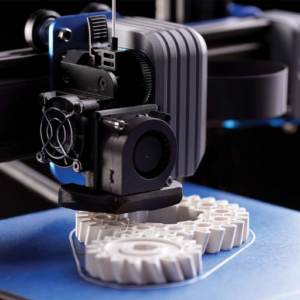3D printing, also known as additive manufacturing, is revolutionizing industries through its innovative way of creating three-dimensional objects from digital models. Among the most common methods employed in this field is Fused Deposition Modeling (FDM). This essay probes into workings of FDM 3D printing, explores its operational mechanics, applications and how it has made significant changes in different sectors. As a cost-effective and flexible technology, FDM is used for prototyping and small-scale production to manufacture complex and customized items. By going through these sections, readers will be able to have a better understanding of the role that FDM plays in reshaping production landscapes and shaping future technological developments.
What is Fused Deposition Modeling (FDM) and How Does It Work?
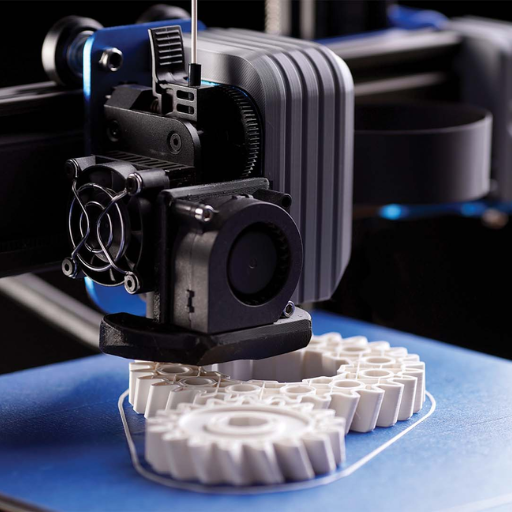
Image source: https://hlhrapid.com/
Fused Deposition Modeling (FDM) is a popular 3D printing technique that uses thermoplastic materials to build objects one layer at a time. The procedure starts with a digital 3D model that is sliced into thin cross-sectional layers using specialized software. During the process of printing, molten thermoplastic gets extruded by the nozzle attached to an FDM printer which precisely moves according to the instructions that were provided by the digital model. The nozzle discharges material onto the print bed where it cools down and hardens forming another layer on top of it. Eventually, after several repetitions of this sequence; an entire object gets built up piecewise like this until complete. Simplicity, affordability and ability to produce tough functional parts make FD M popular among prototyping and manufacturing applications.
Understanding the Basics of FDM Technology
When beginning to learn about the basics of FDM technology, it is important that people know what the main parts are and how they work together. Printers using Fused Deposition Modeling have several fundamental components such as a build platform, print head extruder(s), and control system(s). The surface where an item is made is called the build platform whiles the thermoplastic material is dispensed through a print head or extruder.
Initially, this process involves creating digital 3D models which are then sliced into thin layers using software. These sliced models serve as guides for print heads which heat up and push out melted plastic filaments (usually ABS or PLA) through small nozzles. Based on digital instructions, the nozzle moves around depositing molten filaments at specific locations. Layers are built one after another on top of each other with heat allowing them stick together until completion of whole object creation where material cools down rapidly forming strong structures.
FDM technology has gained popularity due to its simplicity in operation; low cost factor; ability produce complex designs & functional prototypes among other benefits associated with it. Different industries including but not limited to engineering, healthcare, education & manufacturing utilize this method for rapid prototyping as well as on demand production needs.
The 3D Printing Process in FDM
Fused Deposition Modeling (FDM) is a 3D printing process that starts with creating a digital 3D model using CAD software. This model is then turned into a number of thin layers through slicing software which translates the design into instructions for the 3D printer to follow. The printer operates layer by layer, heating and extruding thermoplastic filament via a nozzle. The material is deposited on the build platform where each layer fuses with the one beneath it through heat. This process is repeated until the complete object has been produced. FDM is loved due to its simplicity, cost-effectiveness as well as its ability to produce strong functional parts.
Comparing FDM with Other 3D Printing Technologies
FDM (Fused Deposition Modeling): FDM is one of the most popular 3D printing technologies currently used across industries, thanks to its cost-effectiveness and ease of use. But it is important to remember that there are many other methods for doing 3D printing today.
SLA (Stereolithography): The laser in this method solidifies liquid resin into plastic. It can create objects with high resolution and smooth surface finish which makes it good for detailed prototypes or models. Though more expensive than FDM printers and materials generally are, those of SLA have a higher cost as well.
SLS (Selective Laser Sintering): SLS uses a laser to print with powdered material — usually nylon. This process can be used for making strong parts that have no need for support structures thereby making them complex; thus industrial applications would benefit most from this technology. However, sintering machines and powder-based systems tend to cost more than other types of printers so they may not be readily available among casual hobbyists.
DLP (Digital Light Processing): DLP also cures resin but uses a digital light projector instead of a UV laser like SLA does. Often favored in the dental and jewelry industries which require quick high-resolution prints but at an added expense due to increased complexity during post-processing steps compared against FDM.
In summary, FDM is cheaper and easier to work with when larger objects or functional prototypes are required while other technologies such as SLA, DLP or SLS will give better precision, material properties or complexity albeit at higher prices. Which technology you choose depends on what your specific needs are: budget constraints, unique material requirements, level-of-detail demand.
What Materials are Used in FDM 3D Printing?
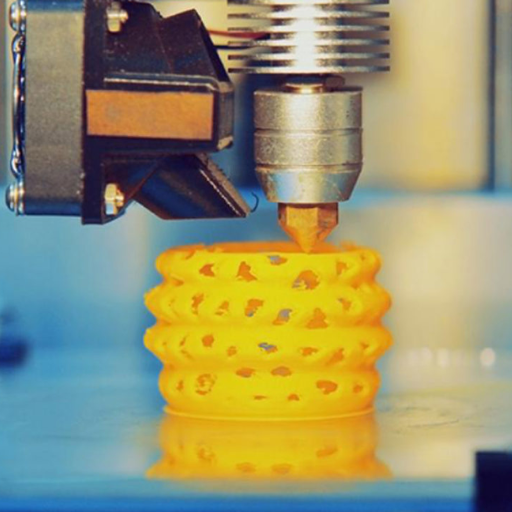
Thermoplastic materials are primarily used in FDM 3D printing— these materials become soft and moldable after being heated and solidify back into a firm state when cooled. Here is an overview of some commonly used ones:
- PLA (Polylactic Acid): PLA is a type of plastic that breaks down naturally so it doesn’t harm the environment. It comes from renewable sources, making it eco-friendly, and easy to work with, which is why beginners like it.
- ABS (Acrylonitrile Butadiene Styrene): ABS is famous for being tough as well as able to resist impact making them good for functional parts or prototypes.
- PETG (Polyethylene Terephthalate Glycol-Modified): PETG combines PLA’s ease of use while printing with ABS’s strength which means you can use this material in many different ways.
- Nylon: Nylon provides high tensile strength combined with flexibility and durability which makes nylon perfect for mechanical parts such as gears or other working components that might need more toughness than usual during testing stages.
- TPU (Thermoplastic Polyurethane): Phone cases require elasticity therefore they must be made out of flexible materials like TPU because this stuff stretches without breaking too easily – also great if you want shoe soles that won’t wear out quickly either.
You buy these filaments according to your printer’s compatibility and project requirements. They come in different colors and diameters too.
Types of Thermoplastic Materials
Thermoplastic materials are a group of polymers that soften or become moldable at higher temperatures and harden upon cooling. In FDM 3D printing, there are many types of thermoplastics used:
- PLA (Polylactic Acid): PLA is derived from renewable resources like cornstarch and is biodegradable as well as easy to use. Because it doesn’t warp much and leaves behind a smooth finish, it’s favored for prototypes, educational projects and decorative pieces.
- ABS (Acrylonitrile Butadiene Styrene): ABS is a petroleum-based plastic known for its strength and impact resistance; it’s commonly used to make functional prototypes, automotive parts and toys. To help adhesion and reduce warping, an ABS print should have a heated bed.
- PETG (Polyethylene Terephthalate Glycol-Modified): PETG offers the ease of PLA with the strength of ABS – it’s also impact-resistant and can take some chemicals, so food containers, mechanical parts or medical devices tend to be made with it.
These materials come as filaments in different forms with varying properties suitable for various project requirements during FDM 3D printing.
Choosing the Right Filament for Your Project
Picking the right filament for your 3D printing project comes down to knowing what each material can do and where it can be used. These are some general rules according to recent data from reputable sources:
- Purpose and Application: Think about what you are going to use the printed object for. Decorative items or prototypes that do not need to be very strong should be made out of PLA as it is easy to print with and biodegradable. ABS is harder to print but creates more durable parts that withstand impacts. If versatility is needed along with great chemical resistance and decent strength coupled with ease of printing then PETG might be the best choice.
- Printer Compatibility: Make sure that your chosen filament will work well with a particular FDM 3D printer. An enclosed build chamber and heated bed are usually necessary when printing ABS in order to avoid warping. On the other hand, PLA and PETG are more versatile materials which can be used on many different machines.
- Environmental Factors: Take into account the conditions under which printing takes place as well as post-processing requirements. PLA does not have such strict ambient temperature limits thus it does not warp often, this makes it ideal for beginners using standard desktop printers. Good ventilation may be needed when working with ABS because it can release fumes while being printed, whereas low shrinkage rate exhibited by PETG allows for easy processing without sacrificing functionality.
These factors will help you select the right filament for ensuring successfulness and longevity of your 3D prints.
High-Performance Materials for Demanding Applications
For demanding applications that need great robustness, longevity and tolerance to severe circumstances, it is important to select high-performance materials. Here are some of the best high-performance 3D printing materials based on recent data from reputable sources:
- Nylon (Polyamide): Nylon is known for its high strength, durability and wear resistance which makes it perfect for producing functional parts like gears or hinges that bend a lot. It has got very good tensile strength with high mechanical stability even when subjected to large amounts of stress due to friction.
- Polycarbonate (PC): Polycarbonate offers excellent impact resistance alongside being strong and heat resistant hence making it suitable for use in engineering applications where performance matters most. These characteristics enable this thermoplastic polymer to withstand extreme temperatures thus being widely utilized in various industrial sectors including bullet proof glasses production as well as electrical componentry development among others.
- PEEK (Polyether Ether Ketone): PEEK is an incredible material because it exhibits exceptional chemical resistance properties coupled with high mechanical strength levels together with its ability to tolerate extreme heat conditions without getting destroyed easily. This makes PEEK one of the most preferred choices for aerospace applications especially those related to space crafts manufacturing where stringent performance requirements have be met besides passing regulatory standards set forth by relevant authorities within medical field among others.
These materials not only cater for specific needs of highly stressed environments but also ensure increased product life cycle and reliability across different advanced uses.
Why Choose FDM for Rapid Prototyping and Production?
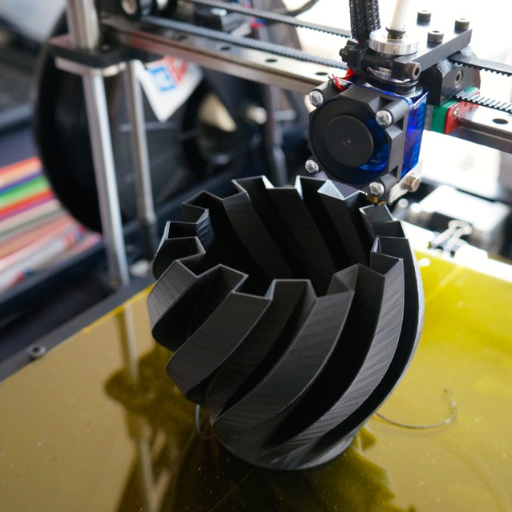
The reason why Fused Deposition Modeling (FDM) is a popular choice for quick prototyping and manufacturing is because it can easily adapt, save money as well as being user-friendly. Complex geometries and functional prototypes which are required in the iterative design process could be created within no time using FDM. The wide variety of available thermoplastic materials helps produce parts having specific mechanical properties that suit different application requirements. Furthermore, printers are relatively cheap while their maintenance cost is also low; this combined with simple post-processing needs makes them affordable even for small enterprises looking forward to optimizing their product development cycles.
Advantages of Using FDM for Prototyping
- Cost-Effective: FDM technology is generally cheaper than other additive manufacturing methods. Apart from printers, the materials are also affordable, therefore both small scale users and large businesses can use it.
- Material Versatility: Various types of thermoplastic materials can be used in FDM since each has different mechanical properties. This means that parts with specific functions such as flexibility or toughness can be produced.
- Ease of Use: The process involved in FDM is simple and involves easy setup, operation and post-processing steps. For this reason, few technical skills are required during prototype production which reduces time used thus faster iteration and development.
- Strength and Durability: Functional tests require high strength levels as well as durability which can be provided by parts made through Fused Deposition Modelling. Thus making prototypes able to withstand real-world conditions.
- Quick Turnaround Time: Designers need rapid prototyping systems like FDM that allow them to test many iterations of design quickly. Engineers must also have access to such facilities because they will enable refinement within shorter periods hence fastening product development cycle leading into faster time-to-market.
These benefits are indicative of the reasons why most people still prefer using FDM for rapid prototyping and production of components.
Low-Volume Production with FDM
Fused Deposition Modeling (FDM) is advantageous for low quantity production because it is cheap, versatile in terms of material and has short lead times. Traditional manufacturing methods typically require expensive molds and tooling which can only be used for bulk production. Conversely, FDM enables the creation of small numbers of components without enormous upfront costs; a feature that is particularly beneficial to startup companies as well as those with limited needs for market testing or customization purposes. In this light, FDM’s ability to work with different types of thermoplastic materials ensures that parts can be designed according to specific mechanical, thermal or flexibility requirements. Moreover, simplicity together with speediness inherent within its process makes it possible for rapid design iterations thereby guaranteeing faster product development cycle times before reaching markets.
End-Use Parts and Functional Prototypes
Fused Deposition Modeling (FDM) is most commonly used in the production of end-use parts and functional prototypes. According to reputable sources, this method creates strong components that can withstand extreme conditions better than any other additive manufacturing technique currently available on the market. The versatility of FDM also means that designers have a wide selection range when it comes to choosing suitable thermoplastics based on desired properties like tensile strength or impact resistance among others. Additionally, recent advancements made in terms of surface finish quality as well as dimensional accuracy achieved by printed objects using Fused Deposition Modeling (FDM) have made them more attractive options for both direct manufacturing applications and functional testing purposes thus increasing their adoption rates within various industries such as aerospace where performance reliability are critical factors to consider during component design phase.
How to Optimize FDM 3D Printing for Best Results?
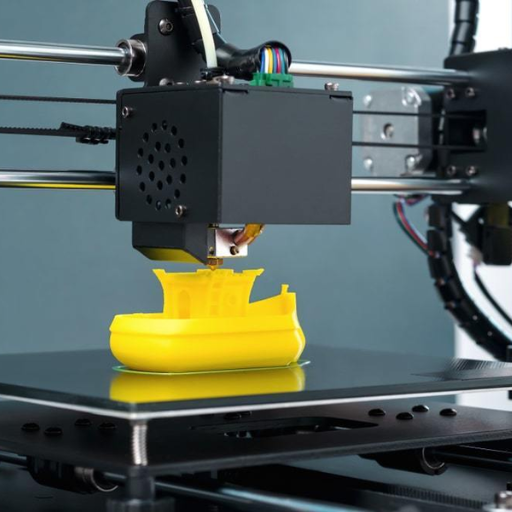
For the best results with FDM 3D printing, use these key optimization tips:
- Material Selection: Select the most suitable thermoplastic for your project depending on its strength, flexibility and thermal resistance.
- Printer Calibration: Regularly calibrate your printer so that it has correct extrusion rates, leveled bed and right nozzle temperature settings.
- Layer Height and Printing Speed: Adjusting layer height and print speed can help you to balance between time taken to print an object and quality produced. More details are shown when using small layers though taking more time.
- Infill Density and Pattern: You should customize infill density as well as pattern so as not to make the weight of a part too heavy or use too much material without providing necessary structural support.
- Support Structures: Optimize support structures in a way that will minimize wastage during printing but still ensure adequate backing for parts with overhangs.
- Cooling and Adhesion: Apply appropriate cooling properties based on material being printed with while ensuring strong adhesion of the bed to prevent warping thereby enhancing stability throughout printing process.
By following these steps one can improve on quality, dependability and productivity of FDM 3D prints.
Setting Up Your FDM Printer
To make sure that it works well and produces high-quality outputs, there are a number of things you need to do in setting up your FDM printer:
- Unboxing and Inspection:
- Take your time as you unpack the machine and go over every part of it checking for any possible damages or defects.
- Put together the printer as required by following what’s stated on the manufacturer’s manual if there is any.
- Software Installation:
- Get the necessary drivers and software from the manufacturer; they can be found on their website usually.
- Printer Calibration:
- Bed Leveling: Ensure that your print bed is level. You can do this manually through screws which are adjustable or automatically if such a function is supported by your printer.
- Extruder Calibration: Make sure that filament is being extruded at the right rate by calibrating an extruder.
- Loading Filament:
- Heat an extruder to recommended temperature for given filament type.
- Insert a filament into an extruder then feed it until smooth extrusion starts occurring.
- First Print Setup:
- Download a simple test model like calibration cube or create one yourself.
- Slice software using this model and adjust settings such as layer height or infill percentage depending on what you want achieved in your project.
- Transfer sliced file to printer either through SD card, USB or direct connection.
- Running a Test Print:
- For starters, try out small prints which are easy so that you verify if everything with machine is fine.
- Observe printing process carefully looking out for problems like weak adhesion between layers or difficulties with extrusion during printing stage.
These steps should enable you set up FDM printer correctly thereby enabling achievement of quality prints.
Post-Processing Techniques for FDM Printed Parts
- Sanding:
- FDM printed parts can be smoothed by sanding which is one of the most popular post-processing techniques. Start with a coarse grit sandpaper (around 100-200 grit) to get rid of the largest imperfections and then use finer grits (up to 1200 or higher) for a polished finish. Sand in a circular motion, taking care not to remove too much material.
- Acetone Smoothing:
- Acetone vapor smoothing works well on ABS parts. This entails putting the printed part in contact with acetone vapor so that it dissolves the outermost layers of plastic thus giving it a shiny look and smooth texture. Keep in mind safety precautions should be taken because acetone is highly flammable and needs to be handled in well ventilated areas.
- Priming and Painting:
- To give FDM parts a professional look and additional surface protection, you may want to consider priming and painting after sanding. Use primer meant for plastics then paint using acrylic or spray paints. It is better to have several thin coats with enough time left for each layer to dry completely before applying another.
- Epoxy Coating:
- Strength can be added as well as glossy appearance achieved on your printed pieces through application of epoxy resin. Let epoxy cure fully according to manufacturer’s instructions after mixing as directed; this should result into hard surface which can take some beating too.
These are just some examples among many other post-processing techniques that could help enhance both cosmetic appeal and functionality of your FDM printed components.
Improving Surface Finish and Mechanical Properties
To improve the surface finish and mechanical properties of FDM printed parts, it is necessary to use both mechanical and chemical methods. For example, sanding and polishing can be used for smoother surfaces through removal of imperfections that exist in each layer. To achieve a professional appearance, this can be supplemented by primers and paints.
Chemical smoothing techniques include acetone vapor smoothing for ABS which creates a glossy finish by dissolving the outermost layers; another effective way is applying epoxy coatings that not only enhance the finish but also increase strength and durability of the part itself.
More advanced options may require specialized post-processing machines or materials capable of greatly enhancing both surface quality as well as mechanical properties. Vibratory finishers as well as dual process smoothing systems among others are designed for more automated and precise improvements. The best outcome from your FDM printed parts will be achieved through use of appropriate combination based on material used together with desired outcome.
What Are the Common Issues in FDM 3D Printing and How to Solve Them?
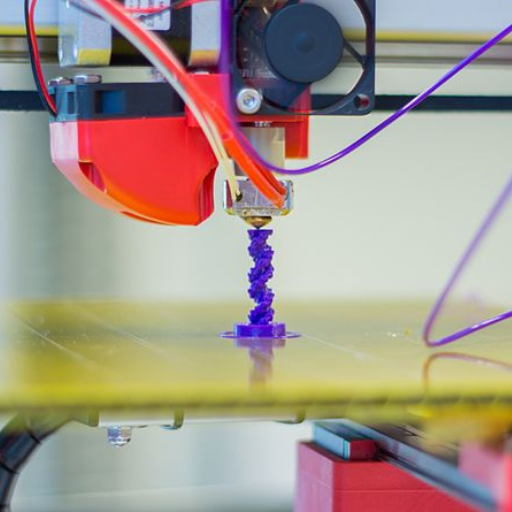
Among the most typical issues in FDM 3D printing are stringing, under-extrusion, warping and layer adhesion problems. The print detaches from the bed during cooling in warping; this can be reduced by using a heated bed and an adhesive such as glue stick or painter’s tape. Stringing is when there are thin threads of filament between different parts of the print, this can be prevented by changing retraction settings and reducing the extruder temperature. Under-extrusion refers to when layers come out too thin or not at all which can happen if there’s a blockage in your nozzle so always check for clogs, ensure that you have inputted correct filament diameter settings and calibrate your extruder accordingly. Layer adhesion problems usually arise from wrong bed leveling or temperature settings hence it should be done manually while ensuring that the best printing temperature for the material used is achieved.
Dealing with Warping and Adhesion Problems
The first thing you should do is make sure that your build surface is level and clean if you’re experiencing any issues with warping or bed adhesion. A heated bed helps a lot with warping since it maintains an even temperature throughout the whole print job thus causing better adhesion on initial layers. It would also help to apply some kind of adhesive like glue stick, painter’s tape or specialized adhesion sheets onto the build surface to improve this issue further more. You could also use a brim or raft that increases contact area between printed object and build plate therefore making it more stable throughout printing process. In addition, one may need to adjust their print settings – lower down speed for example may increase contact time thereby enhancing layer adhesion while still printing first layer slower than others at slightly higher extrusion temperature could as well minimize chances of warping occurring depending on situation.
Addressing Stringing and Oozing Issues
3D printing has a lot of problems, but stringing and oozing are among the most common and annoying. However, there are several effective ways to overcome these problems. The first key is to make adjustments on the retraction settings; you can achieve this by increasing the distance or speed of retraction which will help in pulling back the filament into the nozzle thus reducing chances for stringing. Lowering down extruder temperature may also work since higher temperatures make filament fluidic hence more likely to ooze out. Another thing you could do is enabling combing feature on your slicer so that nozzle never leaves printed parts during travel moves thus minimizing it. Regularly cleaning nozzles plus keeping printers well maintained prevents clogging as well as ensuring smooth flow of filaments thereby reducing further any issues with strings.
Maintenance Tips for Your FDM Printer
To ensure your FDM printer functions at its best and lasts long, you should maintain it regularly. Here are some tips for that:
- Clean it often: Always remove dust particles, debris or any other material that may be left behind after printing from the build volume area. Also, make a habit of wiping the nozzle and bed surface clean to prevent clogging and adhesion problems.
- Lubricate moving parts: The rods as well as bearings of your printer need to be greased occasionally so as not only to enable their smooth movement but also prevent them from wearing out due to friction.
- Check belt tension: Loose belts can result into layer shifting or irregular movement thereby affecting print quality; therefore, check belt tightness regularly and adjust where necessary for accuracy maintenance during printing operation.
- Update firmware: Always make sure that the firmware of your printer is up-to-date because sometimes these updates can enhance its performance by fixing bugs among other things like adding new features.
- Inspect cables and connections: Regularly inspect all wires together with connections looking out for any signs of damage or weariness then fix them tightly so that electrical faults which might interfere with proper functioning of the machine are avoided.
-
Level the bed frequently: You should keep checking if the print bed has been leveled correctly because failure to do this can lead to poor adhesion between layers resulting in unsuccessful prints most times
By incorporating these maintenance practices, you can keep your FDM printer running smoothly and prolong its lifespan.
Where Can You Find FDM 3D Printing Services?
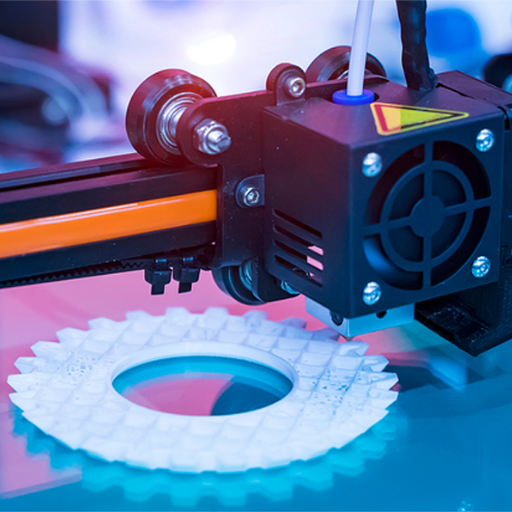
There are many places to look for FDM 3D printing services. Shapeways, 3D Hubs and Xometry are some examples of online platforms that connect customers with professional 3D printing service providers all over the world. In addition, local makerspaces and fab labs usually have access to FDM printers as well as offer their own 3D printing services. On top of that, certain office supply stores and specialized shops may provide on-demand 3D printing services too. Many universities along with other educational institutions possess facilities which provide FDM 3D printing services for students and the public alike.
Top 3D Printing Service Providers
- Shapeways: Shapeways is dominant within a platform that offers a broad range of services for printers in three dimensions. They make it possible to use different materials and advanced printing technologies so that they can be utilized in personal as well as professional projects. Some users upload their designs, choose finishes from a selection of materials offered by the platform, and wait for these designs to come alive.
- 3D Hubs: It does not matter where you are based in the world because 3D hubs will connect people with local service providers who are capable of delivering high-quality 3D prints quickly. This company believes in providing instant quotes which allow customers to have an idea about how much they might spend on their prints before deciding; this also ensures speediness throughout the entire process too due to competitive pricing strategies adopted alongside numerous materials availability plus manufacturing methods suitable for various needs.
- Xometry: Xometry is best known for its FDM (Fused Deposition Modeling) additive manufacturing capabilities among other things like CNC machining and injection molding processes among others used widely across multiple industries globally. The company offers a wide range of services tailored towards meeting different industry requirements such as aerospace or automotive applications etcetera while still ensuring convenience through their easy-to-use platform where customers can get instant quotes thus saving time required when requesting for parts manufactured with precision using this particular technology which may take long if done manually.
Factors to Consider When Choosing a 3D Printing Service
To make sure that you achieve the best outcomes for your project, there are several things that should be considered when choosing a 3D printing service provider.
- Availability of Material and Technology: The range of materials and printing technologies should be evaluated. For particular project requirements, Shapeways or Xometry offer various material alternatives as well as advanced techniques.
- Quality and Accuracy: It is important to search for suppliers who have reputation for delivering high quality prints with accurate details. Consistency in quality can only be shown by looking at what other clients say about them through reading reviews and case studies.
- Costs and Time: Consider turnaround times together with pricing structures. This means you balance between cost efficiency and timely delivery of your order since instant quotes are given by 3D hubs which are competitive in terms of prices.
- Supporting Customers Flexibility: This is very critical especially when dealing with complicated projects where more assistance might be required than usual. Therefore check whether there is strong support system provided by the service provider plus options for customization as well as post-processing.
-
Simplicity: A good experience can be achieved if design upload process up to order completion becomes easy due to user friendly platforms. Xometry among others have streamlined their interfaces making it intuitive hence enabling smooth navigation during management of orders placed through their site or any other related activities done on this platform such as tracking an item till its delivery point is reached
In conclusion; all these aspects must be carefully considered before making any decision since they will determine whether you succeed or fail in realizing your objectives
How to Get Started with a FDM 3D Printing Service
- Establish the Requirements for Your Project: Start by determining what you need for your project in terms of materials, complexity of design and desired finish. Websites such as Shapeways or Xometry provide a wide range of materials along with various finishes to cater different needs.
- Create or Find 3D Model: Use CAD software to create your 3D model or browse through platforms like Thingiverse to find an already existing design. Ensure that it meets the guidelines set out by the 3D printing service regarding file formats and design specifications.
- Choose a 3D Printing Service: Compare FDM 3D printing services like Shapeways, 3D Hubs and Xometry among others. Look into their material options, print quality offered, cost per print as well as turnaround time needed. Opt for instant quoting services provided by some firms for convenience during selection process.
- Upload Your Design: Once you have selected a firm, proceed to upload your 3D model file on their platform. Platforms like Hubs or Xometry have easy-to-use interfaces that make this step seamless.You will get an immediate quote accompanied by visual feedback on your uploaded file.
- Tweak Print Settings: Go through the print settings (layer height, infill percentage etc.) and make necessary adjustments so as to achieve best quality possible at lower costs where applicable e.g. Shapeway has many customization options available on its platform.
- Place Your Order: After confirming settings then go ahead order it ensuring all is reviewed correctly so as not miss anything also confirm prices plus delivery times too if they were included in summary provided before submission stage.
- Post-Processing and Finishing: Depending on what you require choose between post-processing methods such as sanding, painting etc. In addition there are other finishing touches which can be done with post-processing processes that enhance appearance & functionality of printed items.Services offered by firms like Xometry include these steps which give more life-like results when compared against regular prints.
By following these steps and utilizing services rendered by highest rated 3D printing providers, you can cut down on time taken for your FDM 3D printing projects while improving efficiency.
Frequently Asked Questions (FAQs)
Q: What is FDM 3D Printing?
A: FDM (Fused Deposition Modeling) 3D Printing is an additive manufacturing technology that uses a continuous filament of thermoplastic material to create 3d printed parts layer by layer. This method is often referred to as fused filament fabrication (FFF).
Q: How does the FDM manufacturing process work?
A: The FDM process involves feeding a thermoplastic filament into a heated extruder, which melts the material and deposits it in thin layers onto the previous layer. This layer-by-layer process continues until the 3d printed parts are complete.
Q: What materials are available for FDM 3D printing?
A: There are various materials available for FDM, including ABS, PLA, nylon, and specialty materials like Ultem. These materials offer diverse properties, making FDM suitable for different applications.
Q: How do FDM 3D printers compare to other additive manufacturing technologies?
A: FDM 3D printers are often more accessible and affordable compared to other additive manufacturing technologies. However, they might not offer the same level of detail or material versatility as methods like SLS (Selective Laser Sintering) or SLA (Stereolithography).
Q: Can FDM 3D printed parts replace injection molded parts?
A: FDM 3D printed parts can sometimes replace injection molded parts for prototyping or low-volume production. However, for high-volume manufacturing, injection molding usually remains more cost-effective and efficient.
Q: What are some advantages of using an FDM printing service?
A: By using an FDM printing service, you can access professional-grade equipment, a wide range of materials, and expertise that ensures high-quality 3d printed parts. This can be especially beneficial for complex or large-scale projects.
Q: What is the role of soluble support materials in FDM 3D printing?
A: Soluble support materials are used in FDM 3D printing to support overhangs and complex geometries during the printing process. Once the part is complete, the support material can be dissolved, leaving a clean final product.
Q: What are industrial FDM printers, and how are they different from desktop 3D printers?
A: Industrial FDM printers are designed for high-volume, high-precision manufacturing and can handle larger build volumes and more advanced materials. Desktop 3D printers are more suited for small-scale projects and personal use.
Q: What industries benefit the most from FDM additive manufacturing?
A: Industries like aerospace, automotive, and medical benefit greatly from FDM additive manufacturing due to its ability to produce lightweight, durable, and complex parts quickly.
Q: Why is it important to stay updated on the latest advancements in FDM 3D printing?
A: Staying updated on the latest advancements in FDM 3D printing is crucial for leveraging new materials, technologies, and techniques, which can lead to greater efficiencies and capabilities in the manufacturing process.

